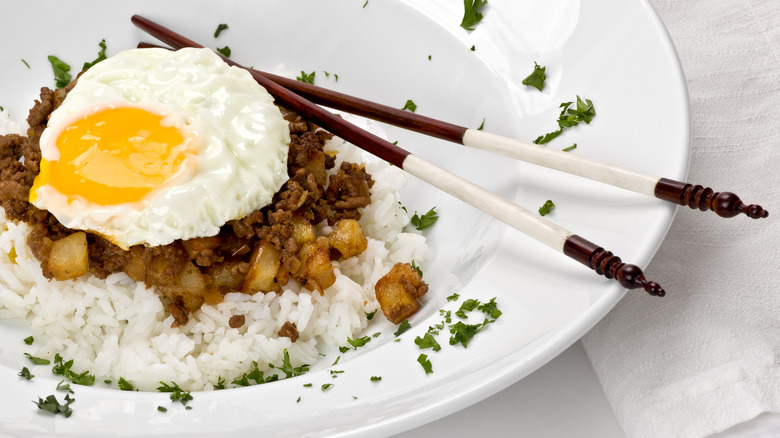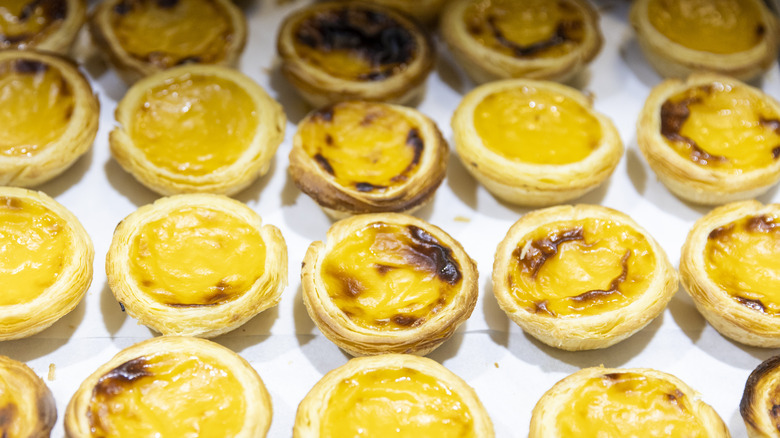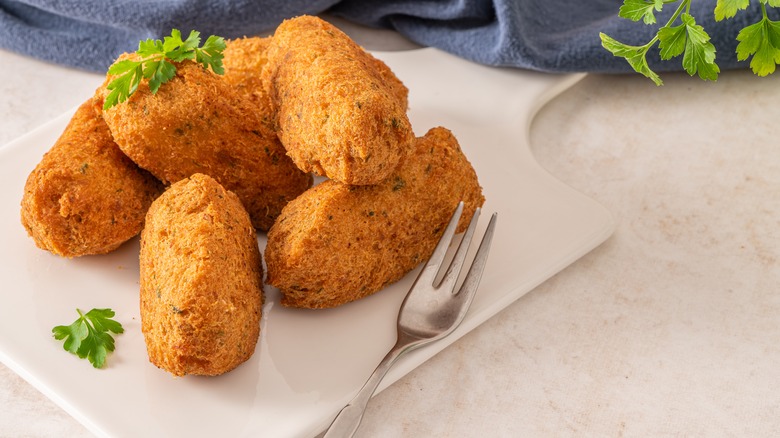The World's First Fusion Cuisine Is Over 450 Years Old
Fusion food might call to mind all the overhyped big-city restaurants from the '80s, but it's far more nuanced than that. Although the oversimplification and appropriation of foreign cuisines have caused this style to fall from grace, giving rise to contemporary analogues like chaos cooking, food has always been a domain where different cultures mingle and interact in unexpected ways.
In fact, while cultures have borrowed culinary customs from other regions or countries throughout human history, the first proper form of fusion cuisine can be traced back 450 years to the small Asian city of Macau. Serving both as a city and a special administrative region in China, Macau has a complex and unique history. It became a Portuguese colony in the 16th century and served as a crucial trading post for the Portuguese empire. Over the subsequent centuries, it developed a distinct culture, characterized by a blend of Cantonese and Portuguese influences on the city. This led to a unique style of cuisine — Macanese — that can't be found anywhere else in the world. In fact, UNESCO recognized Macanese cuisine as the world's first ever fusion food.
The evolution of Macanese cuisine
Macanese cuisine developed in tandem with the local patois, known as Patuá, out of both convenience and necessity. The Macanese ethnic group largely evolved as foreign Portuguese men settled in the city and married local Chinese women. These women endeavored to replicate the dishes of their husbands' home countries, substituting local ingredients and techniques where necessary. The result was a cooking style that drew from both cultures.
Popular dishes in Macanese cuisine include minchi, a stir-fry of ground beef, onion, and potatoes; galinha à Portuguesa, a chicken and potato curry; and porco bafassá, a braised pork and turmeric stew. Some Macanese dishes are clearly inspired by Portuguese cuisine, such as pasteis de bacalhau (salted cod fritters) and Macau egg tarts, which are inspired by the famous Portuguese pastéis de nata. Other dishes, like tacho — a stew featuring cabbage, pork, and Chinese sausages — more clearly result from innovation, combining Portuguese techniques with Chinese ingredients.
The fate of Macanese cuisine
Macanese cuisine has been on the decline since Macau was returned to China from Portuguese colonial rule in 1999, triggering a large exodus of the Macanese population and leaving the ethnic group — and its food — in the minority. Chinese culture has since become the dominant force in the region, compelling Macanese chefs to work hard to preserve their traditional dishes.
Family-owned restaurants like Riquexo and Antonio in Macau serve simple, homestyle Macanese dishes that attract visitors from all over the world. Some of these casual eateries, such as APOMAC — a local association for elderly public workers — have become popular lunch spots despite not being technically classified as restaurants.
While traditional Macanese restaurants are increasingly rare and are mostly found in Macau, a few can be discovered elsewhere. Understandably, there are several Macanese restaurants in Portugal, including the much-lauded Patuá and Taberna Macau. In the United States, there are also places where you can enjoy Macanese cuisine. For example, Noodle Bird (formerly known as Fat Rice) in Chicago serves Macanese food in its contemporary Asian diner, while in New York, the cocktail bar Macao Trading Company offers high-end small plates inspired by Macanese cuisine.



